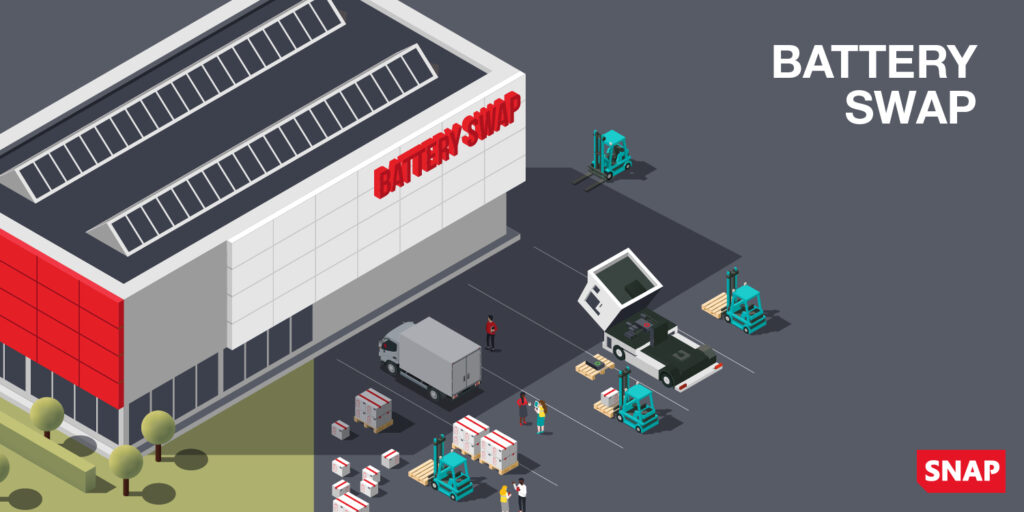Eco-friendly truck park of the future
10th November 2021

With climate change firmly under the spotlight thanks to COP26, SNAP, a leading European smart payment solutions provider for lorry drivers and fleet operators, has unveiled what a truck park of the future might look like. A vision including eco-friendly technology to help the UK meet national and international environmental goals.
Considering the UK government’s 2040 ban on the production of diesel-based trucks and the United Nation’s target to secure a global net zero by 2050, the haulage industry is having to evolve, and fast.
SNAP’s depiction of “Truck Park 2049” – a year before the climate-neutral target – transports the industry to a pivotal moment in time when a new era is about to begin.
By then, it is anticipated that deliveries will be in demand more than ever, but trucks will be smarter, more efficient, and running on renewable energy.
According to the heads of the two biggest truck makers, Volvo and Daimler, hydrogen-powered trucks capable of driving long distances will reach a tipping point towards the end of the decade; an essential step as both groups set 2040 as a target for 100% zero emissions.
Electric batteries will advance by 2049 to allow trucks to travel further distances without recharging. 350kW charging technology will enable HGVs to travel up to 100 miles from a five-minute charge – and payment will be via contactless solutions.
Despite all of this, drivers will still have a crucial role, but will need maintenance skills to keep more automated vehicles on the road. The need for secure parking and fast-charging stations will also be vital, meaning the humble truck park will have a central role to play in enabling the logistics and haulage industry to progress into an exciting future.
Explaining the purpose behind the creation of Truck Park 2049, Emma Westwood, Commercial Manager for SNAP, comments: “This is a truly transitional period for the haulage industry. Technology is already accelerating rapidly, which means truck parks of the future will be very different to what we know today. By visualising what a truck park in 2049 might comprise, our aim is to help support and guide drivers and fleet operators so they can better prepare and plan for this new landscape.”
Westwood continues: “In the years ahead, we expect to see advances in future fuels, alternative propulsion and multi-functional spaces, which will benefit the industry and the climate. We also anticipate the acceleration of automatisation and digitisation, providing an opportunity to reduce the time and resources spent on operational tasks. This will allow for the optimisation of workflows and greater efficiency to help reduce the impact on the environment, while also helping to address some of the other challenges we face, notably the driver shortage.”
SNAP Account’s smart payment system for truck parks is just one example of technology that is allowing fleets at nearly 300 HGV locations across Europe to digitally manage their businesses more efficiently, safely and effectively: something expected to become a fundamental feature of the new-age truck park.

